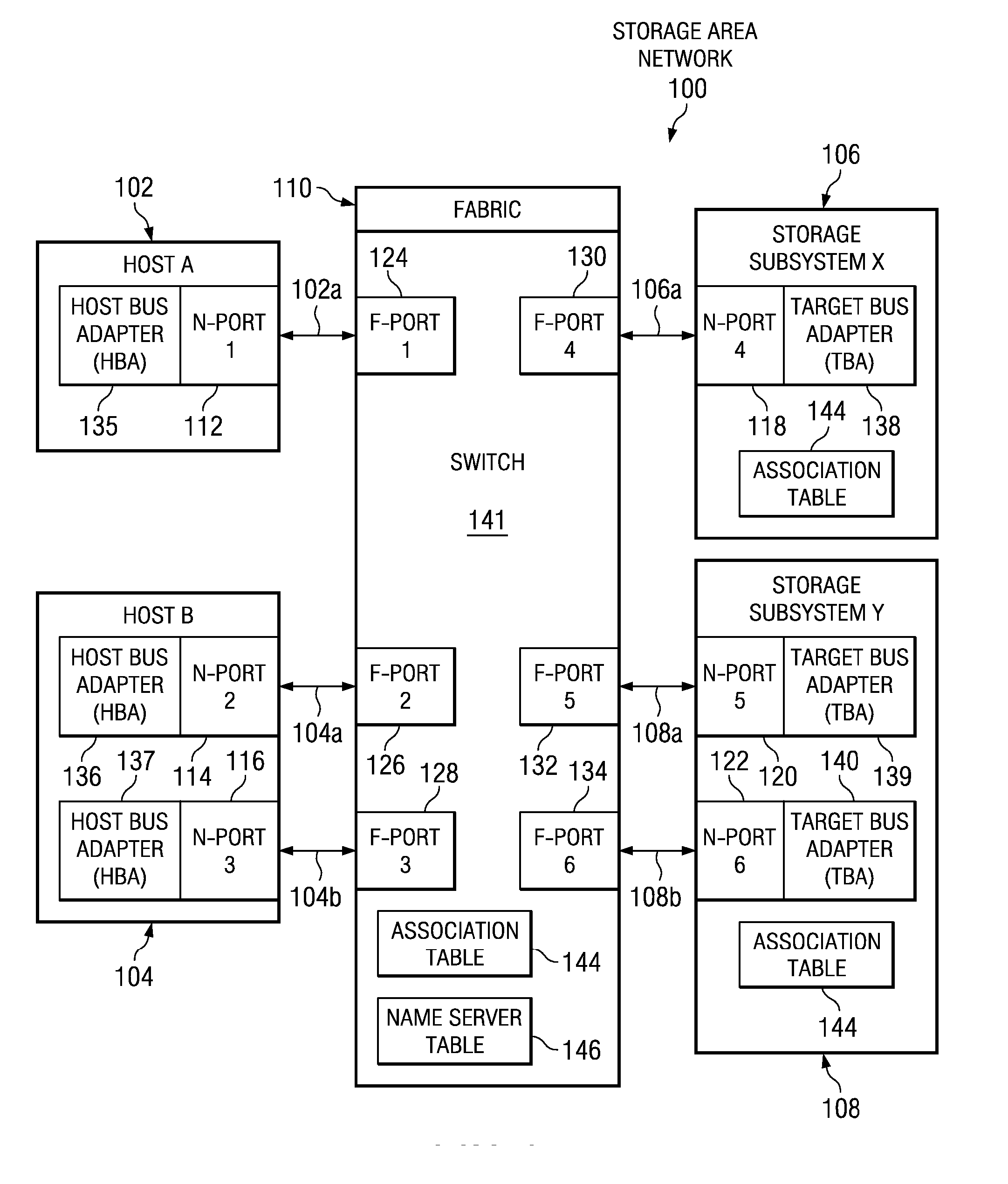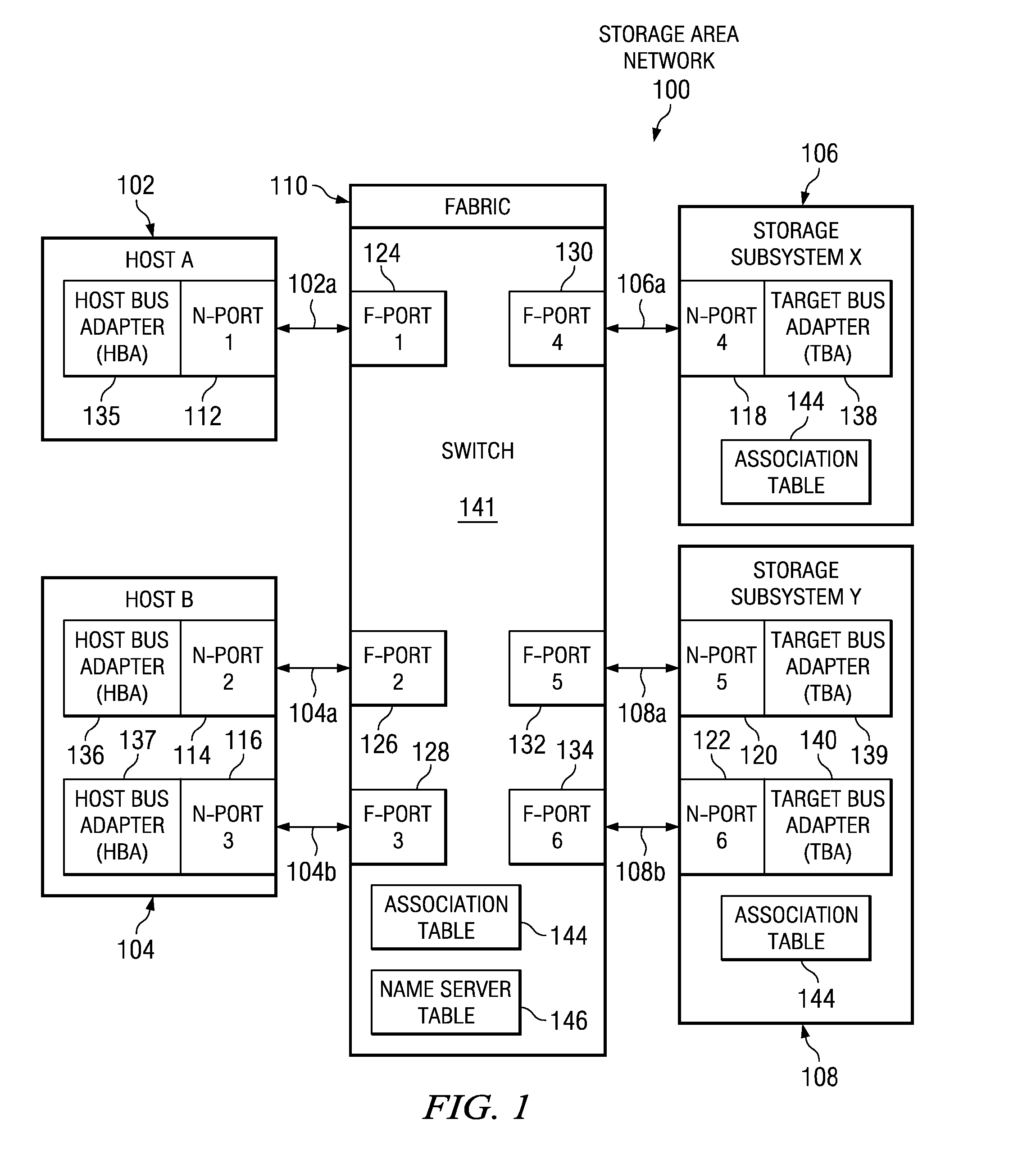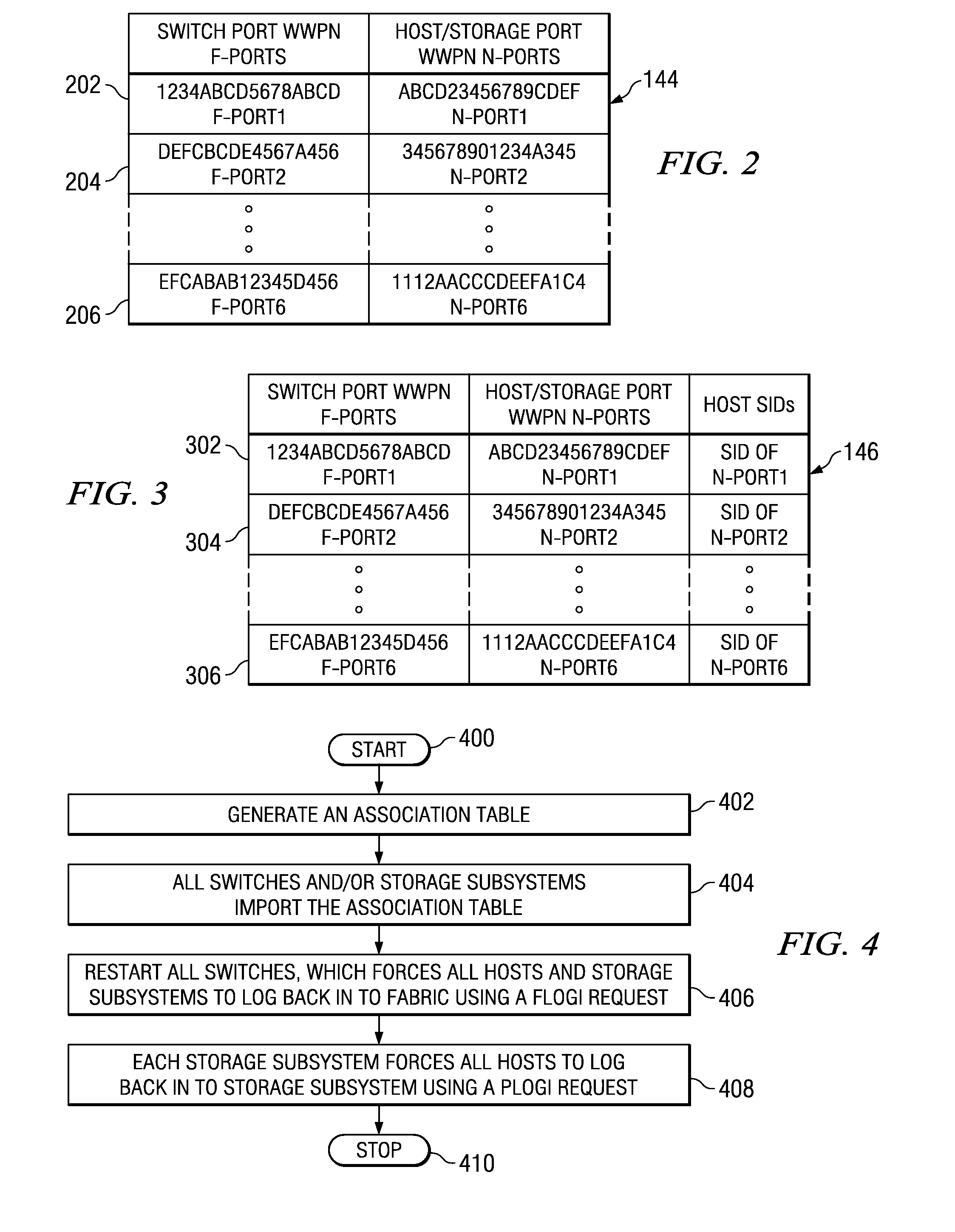Computer-implemented method, apparatus, and computer program product for securing node port access in a switched-fabric storage area network
a technology of switched-fabric storage area and computer program, applied in the field of data processing systems, can solve the problems of high sensitivity of fiber channel storage area networks (san), data contained in attached storage devices can be stolen, changed or destroyed by unauthorized agents, and the fiber channel storage area network can be compromised
- Summary
- Abstract
- Description
- Claims
- Application Information
AI Technical Summary
Benefits of technology
Problems solved by technology
Method used
Image
Examples
first embodiment
[0026] In the first embodiment, a copy of the association table is stored in each storage subsystem. When a storage subsystem receives a PLOGI request, the storage subsystem obtains the source identifier (SID) from the PLOGI request header. The storage subsystem then obtains the F-port WWPN that is associated with that SID from the switch name server. The storage subsystem then looks up the F-port WWPN in the association table that is stored in the storage subsystem to locate an F-port / N-port pair that includes the F-port WWPN. The storage subsystem determines whether the N-port WWPN provided with the PLOGI request matches the N-port WWPN that was paired with the F-port WWPN found in the association table. If the N-port WWPNs match, the storage subsystem validates and processes the PLOGI request to permit the requesting node to log into the storage subsystem. If the N-port WWPNs do not match, indicating a host WWPN spoofing attempt, the PLOGI request is rejected and the requesting n...
second embodiment
[0027] In the second embodiment, the validation is done by the switch instead of by the storage subsystem itself. In this embodiment the switch looks for PLOGI requests coming from N-ports. When the switch detects a PLOGI request to a particular storage subsystem, the switch obtains the source identifier (SID) from the PLOGI request and then uses that SID to determine, from the switch's name server table, the F-port WWPN that is associated with the SID. The switch then looks up the F-port WWPN in the association table that is stored in the switch to locate an F-port / N-port pair that includes the F-port WWPN. The switch determines whether the N-port WWPN provided with the PLOGI request matches the N-port WWPN that was paired with the F-port WWPN found in the association table. If the N-port WWPNs match, the switch validates the PLOGI request and transmits it to the storage subsystem for normal processing. If the N-port WWPNs do not match, indicating a host WWPN spoofing attempt, the ...
PUM
 Login to View More
Login to View More Abstract
Description
Claims
Application Information
 Login to View More
Login to View More - R&D
- Intellectual Property
- Life Sciences
- Materials
- Tech Scout
- Unparalleled Data Quality
- Higher Quality Content
- 60% Fewer Hallucinations
Browse by: Latest US Patents, China's latest patents, Technical Efficacy Thesaurus, Application Domain, Technology Topic, Popular Technical Reports.
© 2025 PatSnap. All rights reserved.Legal|Privacy policy|Modern Slavery Act Transparency Statement|Sitemap|About US| Contact US: help@patsnap.com



